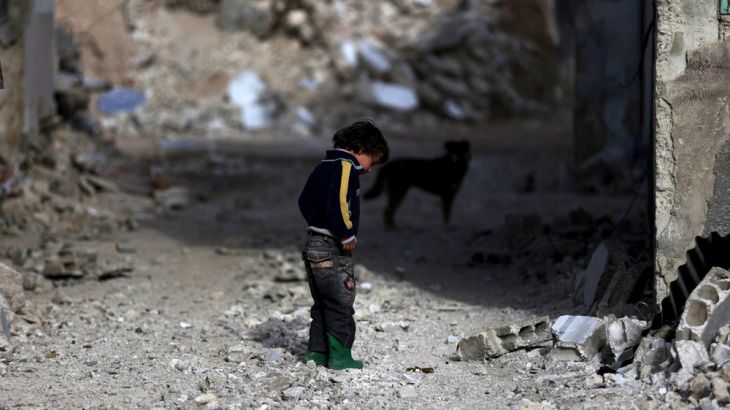
Inside Syria’s War: Arms and Resistance in Jobar
The inside story of how the people of Jobar have defended their homes against the might of the Assad regime.
Click here to watch part one
Lying just a couple of kilometres east of the centre of Old Damascus and some of the city’s best-known ancient monuments – and just a couple more from the pompous modernistic monolith that is the Syrian presidential palace – the suburb of Jobar was once a peaceful and modestly prosperous place. It’s probably most famous as the site of the 8th-century Eliyahu Hanavi Synagogue, a place of Jewish pilgrimage for centuries.
Otherwise, it was the kind of pleasant-enough area to which ordinary people gravitate when wanting to bring up their children, go about their business and get on with their lives: unassuming streets of shops, apartment blocks, offices, cafes, neighbourhood schools and mosques.
Then came the Arab Spring, the Syrian uprising of 2011 and the devastating war that followed. As in other parts of the capital and the country, many residents of Jobar joined the early peaceful demonstrations against President Bashar al-Assad, seeking democratic reforms and policy changes.
READ MORE: Syria’s civil war explained from the beginning
The brutal response from state security services that these protests provoked and the subsequent armed rebellion that broke out across Syria saw Jobar caught up in events, and before too long the municipality found itself on the front line between Assad’s regime and those trying to bring him down.
More than five years on, Jobar is unrecognisable – a bomb-shattered empty relic of what it once was. It’s a tragic monument to the 250,000 people who used to fill Jobar’s avenues with bustle and noise but have been driven away by death and destruction and high explosive savagery of a sort that immediately evokes thoughts of Guernica or Stalingrad or any of the other infamous urban slaughterhouses of the last century.
In Syria, hundreds of thousands of people are besieged in five different provinces. Our map shows you which areas are most affected. pic.twitter.com/4GfrzqK1hF
— AJ Labs (@ajlabs) May 8, 2017
But though Jobar in the summer of 2017 might seem to be abandoned and deserted, there is still life here.
Beneath the rubble, clinging on somehow in the derelict shops and apartments, 200 or so Jobarian families are defiantly holding out against a regime which just last month launched another massive aerial and ground offensive to reclaim the district from the motley assembly of rebel fighters who guard its approaches with rifles and mortars and machine guns.
READ MORE: Jobar: ‘Death is a central part of their daily lives’
So, why are they so determined not to give way? How do they bear the grinding privation and constant danger? What is so special about these ravaged city streets that people, who in earlier lives would have been shopkeepers and bus drivers and civil servants and housewives, are so doggedly determined not to surrender them to their enemies?
For several months a group of filmmakers, led by exiled Syrian producer/director Maher Jamous, have been working amid Jobar’s refuseniks to document their struggle and answer those questions.
The results have been compiled into this extraordinary two-part People & Power special report.
Please note that viewers may find some of the images in these films disturbing.
Part one
|
|